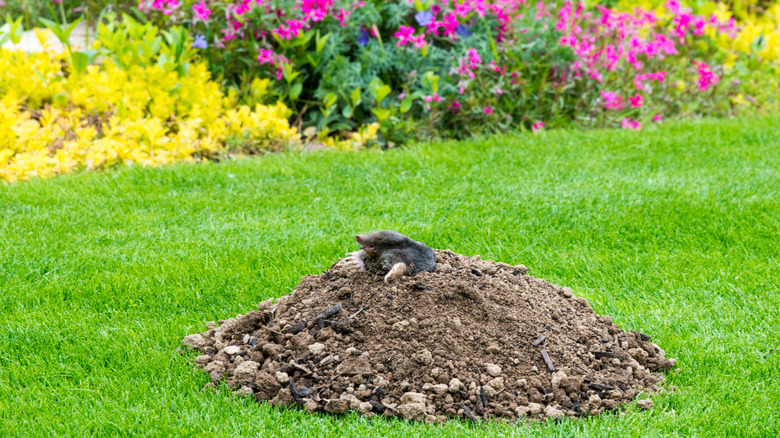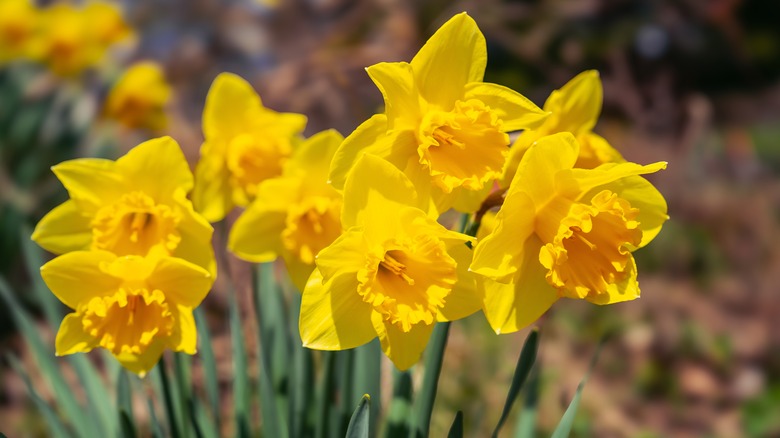The Beautiful Flower That'll Help Keep Pesky Moles And Voles Out Of Your Garden
The smallest intruders can quickly turn a blossoming garden into a barren patch. While moles and voles are similar in appearance, these little critters each cause a different type of damage to your yard. Moles do not harm plants directly. Instead, they dig deep tunnels under the ground to eat grubs, insects, and worms. Their burrows can uproot plants, often causing them to dry out. Voles are mouse-like rodents. They also burrow beneath the ground, but voles are herbivores that feed on grass, stems, roots, and bark. Golf ball-sized entrance holes and plant roots ridden with bite marks are a telltale sign that voles are present. Mole hills, raised tunnel ridges, and uprooted plants indicate mole infestation.
One flower that is believed to deter moles and voles is the daffodil (Narcissus poeticus). With its cheery, butter-yellow and white blooms, these popular spring flowers are not only a beautiful addition to your garden, but they are a natural way to repel pesky moles and voles. From its bulb to its stem to its flower, daffodils contain an alkaloid called lycorine which can make digging mammals sick. Over time, lycorine will even leach into the surrounding soil. Any moles and voles in your garden will quickly learn to avoid that area. It is important to note that lycorine can also cause illness in domestic animals, especially those that like to dig in the garden.
How to plant daffodils to best repel moles and voles
There are several strategies you could adopt to make these flowers more effective at deterring moles and voles while adding a gorgeous touch to your garden. Any daffodil variety will discourage moles and voles from visiting, but jet fire daffodils are particularly effective for its strong scent and bitter taste. Plant placement is also important in repelling pests from your garden.
Creating a border of daffodils around your plant bed is a simple way to ward off these tiny mammals. For an even stronger barrier, you can plant a border with clusters of daffodils instead of single plants. This method not only creates a stronger defense against moles and voles, but it makes your garden look fuller. If you do not like the idea of a border, you can interplant or companion plant daffodils in your garden. You should space daffodils about 3 to 6 inches from other plants to allow them room to grow. Simple yellow daffodils will easily complement your garden. They can fill in the gap if your other flowers have not yet bloomed or are finished for the season.

